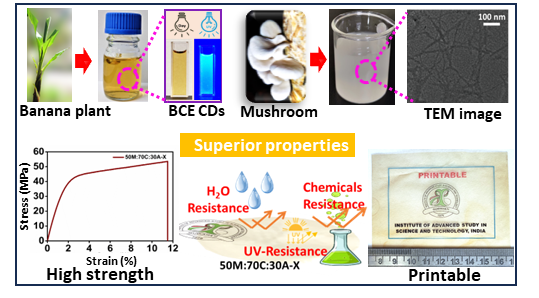A biopolymer nanocomposite film synthesised with chitosan, sodium alginate and mushroom that has high mechanical strength and possessed high chemical resistance to different solvents, could be useful for food industries.
Plastic materials are widely used in the food packaging industry because of their affordability and convenient durability. However, these materials are non-biodegradable, contributing to the accumulation of solid waste on the Earth's surface and posing a threat to living beings. Biopolymer-based polymer material offers a more eco-friendly and biodegradable packaging solution as an alternative to plastic material.
Scientists from the Institute of Advanced Study in Science and Technology (IASST), an autonomous institute of the Department of Science and Technology (DST) led by Prof. Devasish Chowdhury, Professor in the Physical Sciences Division, and his DST INSPIRE Senior Research Fellow (SRF) student Mr. Sazzadur Rahman have developed a biopolymer xerogel film composed of chitosan, sodium alginate and mushroom. The biopolymer nanocomposite film was synthesized using a green fabrication approach using a solution casting technique. They first synthesized carbon quantum dots, a nanomaterial derived from banana corm, and used as a cross-linker in biopolymers to tune the properties of biopolymers. In addition, they used mushroom powder and converted it to cellulose nanofiber.
The fabricated xerogel nanocomposite film has high mechanical strength and possesses high chemical resistance to different solvents, pH mediums, and water. The nanocomposite film is also very flexible and printable on the film surface, which widens the scope of its use in packaging materials. The scientists demonstrated that the fabricated nanocomposite film was non-toxic and biodegradable within 55 days of soil burial. "Such innovative, non-toxic, biodegradable, and sustainable packaging material is auspicious that can be scaled up to an industrial level and used especially in food packaging," said Prof. Chowdhury. This work has been published recently in the ACS Sustainable Chemistry & Engineering journal.
Publication link: https://doi.org/10.1021/acssuschemeng.3c05277.
For further Correspondence to Dr. Devasish Choudhury [devasish[at]iasst[dot]gov[dot]in]































